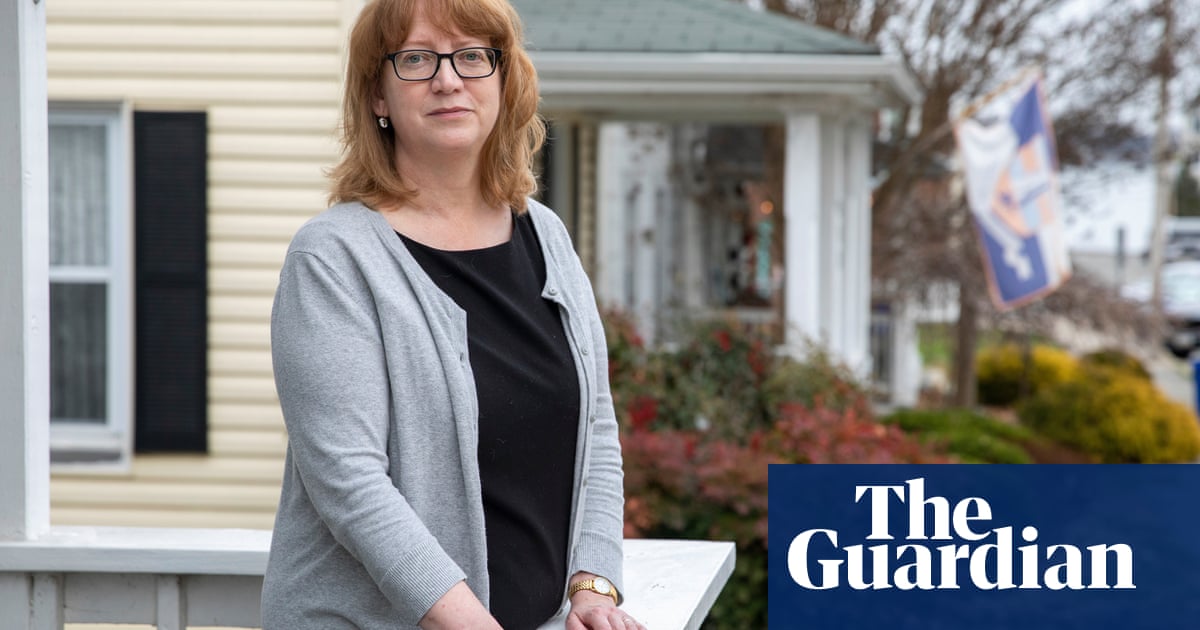
It’s Saturday morning and a group of women are standing in a nervous huddle, waiting to see if the vases and bowls they popped into the kiln last week have survived. “That came out really nice,” says one student. “Oh, wow!” proclaims another, holding up a small bowl. “I’m so proud of me.”
Freya Bramble-Carter, their 30-year-old teacher, looks on at this studio in Kingsgate Workshops, in London, like a mother watching her children make fairy cakes for the first time. “It’s really fun seeing their reactions,” she says. “Especially after they’ve applied the glaze. Then the clay’s been through all of its transformations.”
An artist and a teacher, Bramble-Carter recently showed her work at the Collect art fair in London. Channel 4 viewers may also remember her from the 2017 series of The Great Pottery Throw Down, which she exited after failing to make a successfully flushing toilet. She has more than 26,000 followers on Instagram and is much admired in this class. Watching her at the wheel, gracefully turning a ball of wet clay into the beginnings of an elegant vessel, one of her pupils refers to her as “the goddess of pottery”.
She studied at Chelsea College of Arts, but it was her father, Chris Bramble, who has been teaching ceramics for 30 years, who passed on his craft to his daughter and her twin sister, also a ceramicist and performance artist. It’s hard to get a place in Freya and Chris’s classes at the moment. “They’re always booked up,” says Emily, one of today’s pupils. “You have to keep trying.”
That’s because, of late, the world has gone potty for pots. Ceramics are on fire. The craft that was until fairly recently associated with a lumpy 1970s earnestness, and shoved to the back of the cabinet of embarrassments throughout the minimalist 1990s and 2000s, has re-emerged and is now deemed to be hot.
The oddity of this modern appreciation for one of civilisation’s most ancient activities – just a short anthropological move from hunting and gathering – is perhaps best expressed in the number of mega-celebrities who have expressed a passion for getting their hands dirty. Serena Williams admitted on social media, back in 2019, that she was “really getting into pottery”. Actor Seth Rogen became so enthused by pots during lockdown that he built a studio in his garage and sells his own ceramic marijuana paraphernalia.
Brad Pitt doesn’t just sculpt in clay, he uses other materials, apparently while listening to Frank Ocean – he is also sometimes joined by Leonardo DiCaprio. Laura Harrier, star of Spider-Man: Homecoming, has her own pottery studio, while Josh O’Connor, who played Prince Charles in The Crown, regularly posts pottery appreciations on Instagram, praising the late Lucie Rie. An acclaimed British ceramics artist, formerly only known to a niche audience, Rie’s name is now nodded at sagely by anyone who’s bought a four-set of wobbly cereal bowls from a clay-splashed parent at the school fair.
In fashion circles, it’s got to the point where you’re no one if you haven’t already launched a micro collection of organic-form vessels. Last year, the designer Jonathan Anderson, a ceramics collector and superfan, collaborated with both the Kenyan-born, Surrey-based artist Dame Magdalene Odundo, known for her handbuilt, highly burnished works, and young American ceramics star Shawanda Corbett on a collection of blankets for the JW Anderson autumn/winter 2021 collection. French designer Isabel Marant has stopped working on Mondays so that she can pursue a ceramics practice in her own recently completed pottery studio. “I don’t want to make any business out of it,” she says. “It’s the realisation of a dream and very satisfying to me. Although I think my friends are going to be pissed off because they won’t get clothes as presents any more – they’ll get ceramics.”
Henry Holland, the former London fashion week star who has dressed the likes of Alexa Chung and Rita Ora, has moved over to the kiln-fired fun side entirely. When his fashion brand, House of Holland, went into administration at the start of the pandemic, he sought creative solace in a bag of clay. The morning after he’d posted a few pictures of some stripy bowls on social media, he woke up to 150 orders and is now at the helm of a new ceramics enterprise, a collection of graphic tableware made from contrasting coloured clays in the Japanese tradition of nerikomi, sold by, among others, Liberty and Soho Home.
“The ceramics industry across the country is flying,” he says. “When I’m asking my suppliers if they can create new colours for me, they’re saying, ‘We don’t need any new business.’ They’re totally overwhelmed. There’s a resurgence in homewares in general, and hand-making processes and craft, a move away from mass production. People are becoming much more aware of what they’re buying and attaching more emotion to objects. And I’m not going to lie: it’s definitely increased in relevance because of Throw Down.”
Jovial, inclusive and messy, The Great Pottery Throw Down, which recently broadcast its fifth series on Channel 4 after launching on BBC Two in 2015, has done much to educate Britons about ceramics, making them as au fait with the dangers of floppy rims as they are with Bake-Off’s soggy bottoms. Helen Ritchie is a curator at the Fitzwilliam Museum in Cambridge, which holds the country’s most important collection of European, Middle Eastern and Far Eastern ceramics, and is exhibiting Odundo’s works and inspirations. She sees more engagement with ceramics from visitors these days. “They ask more questions about how things are made,” says Ritchie. “They’re not just walking past saying, ‘Nice pot.’ Although I think people do find it easier to have an opinion about ceramics in a way that they won’t about a painting because they’re such familiar objects. We all have ceramics at home. Everyone uses ceramics on a daily basis.”
She cites two prominent artists – and brilliant communicators – who have brought ceramics to the fore: Edmund de Waal and Grayson Perry. “De Waal is writing books, Grayson’s on the telly, so you’ve got these well-known people talking about pottery and making it popular.” As a result, she says, traditional fine art galleries have started showing more ceramics, and collectors who wouldn’t previously have invested are buying. Ceramics are increasingly being sold in fine art auctions, too. Odundo, whose work has made it into this year’s Venice Biennale, continues to keep smashing her own record price for a single work by a living ceramic artist: her Angled Mixed Coloured vessel fetched £240,000 in November 2020.
But away from lofty galleries and six-figure price bombs, there’s a sense that pottery can give us all something more, that its earthiness reaches the parts that other arts, crafts and even jobs cannot reach – even if the job in question is starring in hit Hollywood films or winning the tennis grand slam. “Honestly,” said Rogen of his pottery habit, “I was surprised at how much I got from it. It forces you to be very present.”
In a predominantly digital world its tactility has rising appeal. “The physicality and sense of accomplishment is so rewarding,” says Holland. “When I was a designer, I was so far removed from the actual making of garments. I’d work with my team in the studio on fitting the samples, but then you’re just waiting for factories to manufacture them. Whereas now I go into the studio and a lump of mud is all I need for a finished piece.”
Back at Kingsgate Workshops, Maryam Pasha, a “storyteller” and director of TEDxLondon and TEDxLondonWomen, is about to glaze a vase she made in late Owen blue. “I like that you have to be patient and don’t always know what is going to happen,” she says. “I find that as you get older, you rarely do things you’re bad at, so it’s teaching you a bit of patience.”
In her day job, Pasha helps scientists and experts communicate about the climate crisis. “It’s pretty heavy,” she says. “Here I have three hours where I don’t have to look at my phone. I cannot think about anything else – because if you come into the studio and you’re distracted, it’s a disaster. You have to leave all that outside. It’s a type of active meditation. It lets you be in your hands rather than in your head.”
Chris Bramble and Freya Bramble-Carter are exhibiting at the Queens Park Art Centre pottery festival, Aylesbury, until 18 May – with a live demonstration on 14 May.












